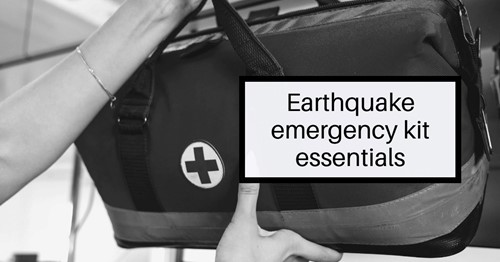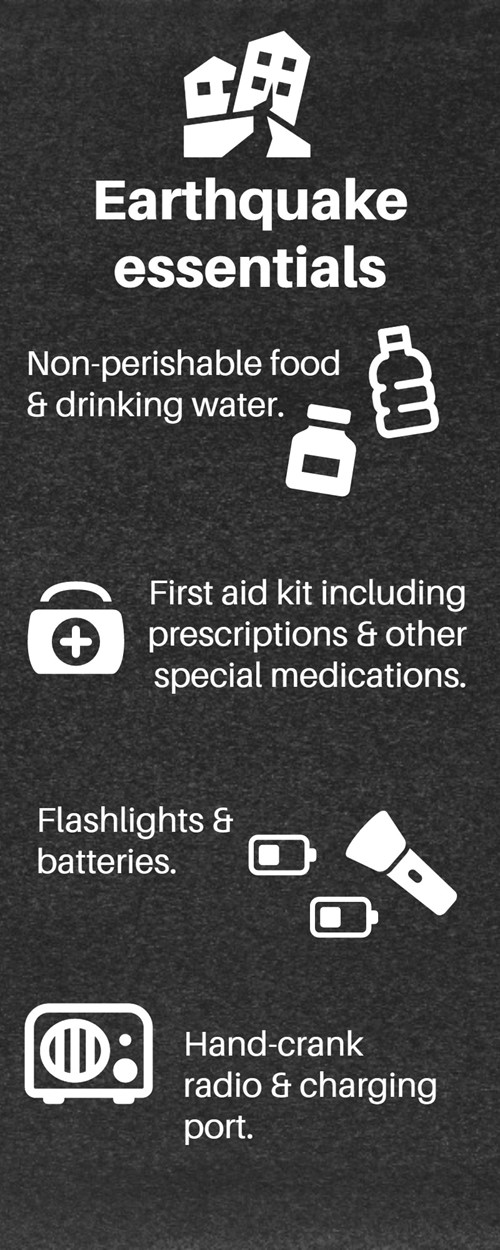
Earthquakes can be one of the most daunting natural disasters simply because of their surprising nature. However, there are ways for you and your household to stay safe, including having an emergency supply kit waiting and ready.
Here are four key essentials all earthquake preparedness kits should have:
Food & water
When it comes to emergency supplies, food and water are typically at the top of the list. BE sure to have a means of creating potable water in your disaster supplies kit. For those seeking to have food staples ready, keep a few nutrition bars or compact nutrition chewables in the same area as your potable water supply.
If you still have running water and electricity after an earthquake, you may be able to boil the water for drinking and personal use. However, for those without a means of sanitizing their water after such an event, try using potable water tablets. These tablets are typically sold at camping stores and act as a means of sanitation.
Another bout of excellent solutions for water and food within your emergency supply kit are dehydrated foods and bottled water. Be sure to check the expiration date on both to make sure they’re still good, and replace them as needed, due to their shelf stability being lower than potable water tablets or nutrition chewables and bars.
First aid kit
Your emergency kit should include first aid supplies or a smaller first aid kit to fit inside your overall earthquake preparedness bag. Your kit should include:
- bandages,
- antiseptic,
- gloves,
- CPR instructions and accessories,
- glow sticks
- and splints.
You can buy first aid kits at most pharmacies and camping stores, either locally or online. You may want to supplement them with a few generic medications you might need like allergy medicines, anti-inflammatories, pain medication and any other essentials.
Batteries & flashlights
After a major earthquake, power outages are likely to occur, which means your home and the surrounding area may be without electricity. Keep batteries for essential devices such as emergency medical devices, flashlights and any other critical items on hand. It’s best to have every size you may need handy and packed away safely in your earthquake kit.
You’ll also want to have a reliable flashlight, possibly a waterproof one depending on your location during the earthquake. Be sure the flashlight is bright enough to see an adequate distance away (typically five to ten feet at minimum). You’ll also want to keep a backup in case something happens to your primary flashlight.
Hand-cranked radio & charger
It’s always a great idea to have a hand-crank radio when an earthquake happens. These devices run on energy fed to them by simply cranking the handle. Many also have charging ports for cell phones and other devices, as long as the correct cable is attached.
It’s important to stay informed after a natural disaster, since some hazards may have become more apparent, like undrinkable water or areas that aren’t suitable for habitation due to severe structural damage.

Regardless of other accessories you may want to consider for your supply list, keeping these items available and in the same location is a great way to ensure you at least have a basic earthquake kit.
